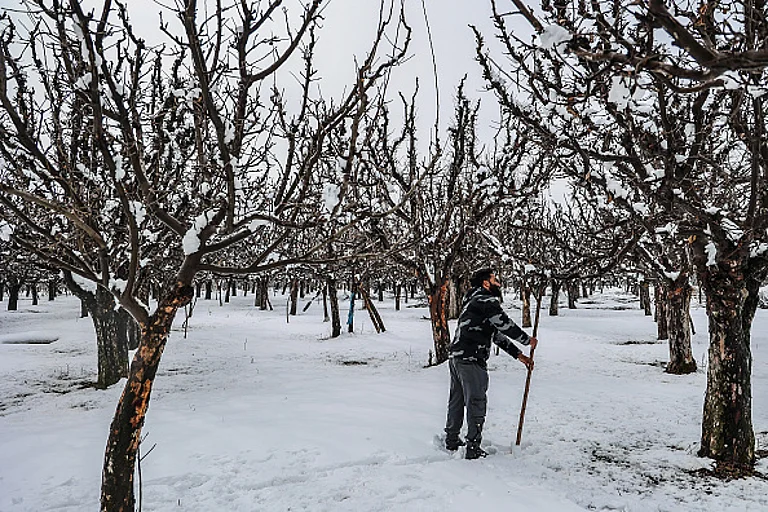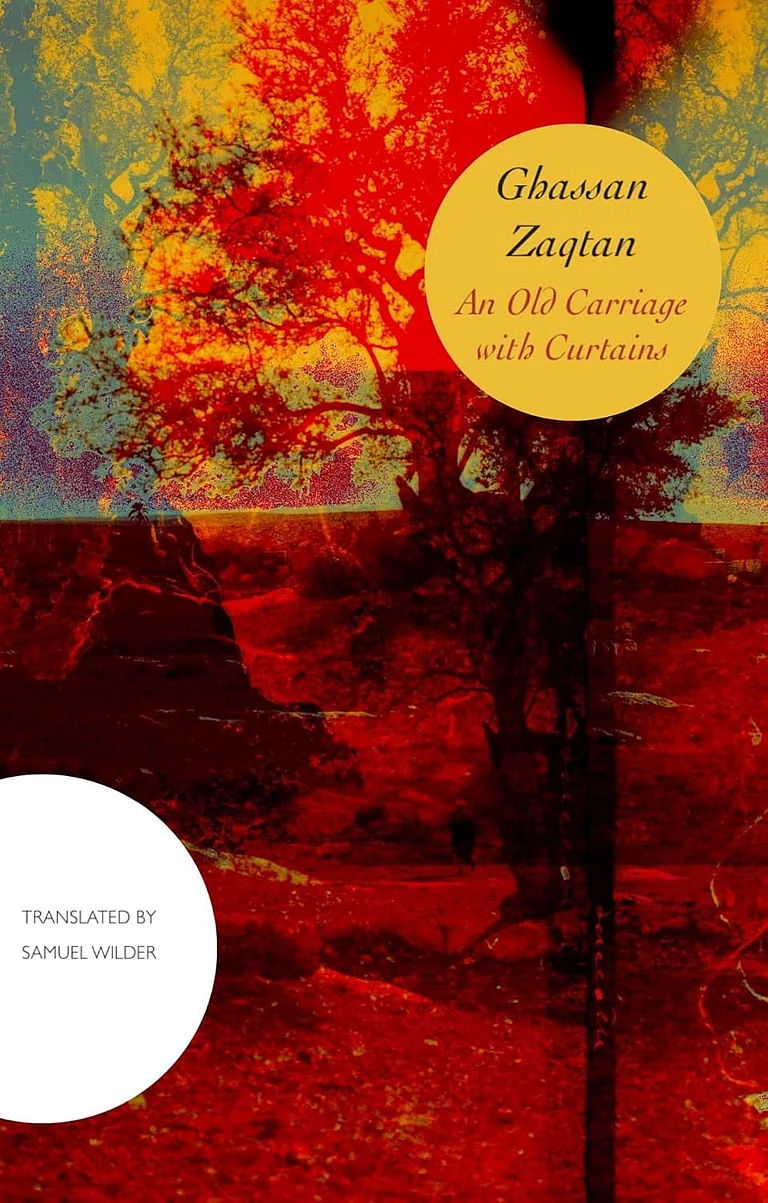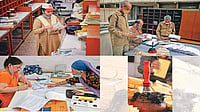She nearly jumped out of her skin when her three-year-old son walked in on a meeting. Full Monty and crying at the top of his lungs: “Mama, pee-pee…Mama, pee-pee!” She dashed like a shot for a post-it note and pasted it on the computer camera—blocking the 24-people meeting from the full blast of a puny intruder in her ‘office’. Or, that’s what she thought. But before she could tow junior to the loo, he emptied his bladder on the floor. She sequestered him in his room, scrub-dried the tinkle pool and resumed ‘work’. “Sorry for the interruption.” She apologised. But why the hell are they laughing? “Change your pajamas,” a colleague quipped. Well, her sticky note cover was blown. It had fallen off. The little commotion, the jam-stained night pants paired with a smart office shirt were live-streaming all along for everyone. Red-faced, she wondered aloud why her tech-savvy plummets to toddler level in the event of a panic attack, or why it didn’t click that the computer has an on-off switch? The meeting ended on a lighter note—quite a reprieve in these anxious times when millions of homebound people are adjusting to the new realities of stay-home, work from home. And, of course, this life in a parallel reality has its pitfalls, and some epic fails, but without those ‘con-calls’ and video conferences the world would actually have come to a standstill.
In fact, if it wasn’t for virtual/video calls, the government command centre and its machinery would have been biding its time under a rock in this age of social distancing. Prime Minister Narendra Modi has been the first off the block in holding regular meetings with his ministers and bureaucrats remotely. He held his fifth interaction with chief ministers through vid-con on May 11 when they discussed plans to ease the lockdown. The Union and state ministers are broadcasting their message to the public through webinars. The caveat for government officials working from home is that they have to be attired “properly” and maintain all norms of office environment during vid-cons. For its part, the Opposition too has been live-streaming its suggestions to the government on the COVID-19 crisis. Congress’s Rahul Gandhi has addressed the media several times via vid-con.

Pakistani politician Shaukat Yousafzai live-streamed a press conference unaware that the Facebook cat filter was swtiched on.
Schools—especially those in urban areas—started their new sessions from April through virtual classes, or remote coursework. The broadcasts are resonating with students; and parents are getting some relief from the constant nag of “I am bored.” E-learning is getting the government’s push as well, with finance minister Nirmala Sitharaman announcing the Pradhan Mantri e-VIDYA initiative for digital education that includes online teaching, and broadcasts through TV channels, radio and podcasts. Top 100 universities will be allowed to begin online courses by May 30.
For the musically inclined, entire concerts are happening over apps like Zoom with members of the orchestra sitting miles apart in the comfort of their homes playing Mozart in C++ minor. With restaurants and bars shuttered, and takeaways almost non-existent, people are learning to cook samosa and shushi, biriyani and bisi bele bath through YouTube. Some for fun, some as a necessity, and some in desperation like Mr M who was brewing his own toddy sundowner from coconut water. And for the covidphobes, worried sick over contamination of their food at the source, takeaways like Instapizza has introduced CrustFlix (www.instapizza.in/crustflix)—customers can live-stream activities in its kitchen all day, every day. If anything goes wrong, doctors are seeing patients online.

The biggest consumer of teleconferencing is India Inc, which began its 2020-2021 fiscal and set targets with a flurry of web meetings. “We have done more than 350,000 meetings, more than 60 events with thousands of participants in each. It is fascinating to note the ease with which the employees have used the platform and navigated through it on their own,” says B. Ghosh, CIO, enterprise and corp functions, Mahindra Group, which has been using Microsoft Teams since the lockdown began in March.
The most popular teleconferencing software in India is turning out to be Zoom, which has a daily user base of 300 million. From corporate meetings to high-profile weddings, most things social are happening on this app. “It’s easy. Even technically off-radar people like me can use the app easily on their mobile phones. Besides, whether you accept or not, it is much better in connecting with many people together than WhatsApp etc, where there is a limit on how many can join a conversation,” says Ajit Arora, 65, a physician. He now ‘Zooms’ with his joint family every day, although there is always the risk of zoombombing. One such case was reported from Plymouth in southwest England when child sex abuse footage popped up during a fitness class for about 60 children. Other zoombombed meetings include a wine-tasting event in Manchester that left some participants in tears. No such embarrassment has shocked users in India so far. But the home ministry, in a 16-page advisory, warned that Zoom is not safe and susceptible to cyberattacks that can lead to data leaks. Sameer Raje, who heads Zoom’s India operations, clarifies that the holes have been plugged and a filter introduced, which allows paid users and administrators to restrict their data from floating across the globe.

Epic fail—vid-con gaffes like this are infusing some joy into an anxious life.
Video calling has been around for some time, but its demand has spiked only after the coronavirus outbreak drove almost half of the world’s population indoors. No doubt, competition has been fierce so much so that Zoom, Google Meet and Microsoft Teams, which were paid platforms, are not charging any money till 2020-end. Apps are coming up with specialised features such as in-app translations into Indian languages during meetings, background change during calls. Even dating app Tinder has added a vid-con feature and WhatsApp has increased its number of participants to eight for video calls. Facebook too has rolled out its group video chat Messenger Rooms globally. It allows free video calls with up to 50 people with no time limit.
The competition, proliferation and dangers posed by such foreign apps have not gone unnoticed. Besides, video calls consume huge data, around 1 GB an hour and it goes up depending on the size of the group. And so, the ministry of electronics and information technology has launched an ‘Innovation Challenge for Development of a Video Conferencing Solution under the Digital India Programme’—which, in simpler terms, means the government wants a desi platform that could compete with Zoom, Google Meet and Microsoft Teams. The winner, to be picked on July 29, will be contracted to design and develop an app for the Union and state governments. “Although issues like privacy and data theft are there, those are being covered through subscription models. This is alarming. It’s like you can have privacy only if you have the money,” says a technology expert from Cisco, who doesn’t want to be named. He suggests that people should “look for the end-to-end encryption security feature on an app” before installing it. Another free advice: be discreet with what the permissions you give to an app, which invariably asks for access to your phone contacts, media files etc before you install it on your phone or tablet.

Ladakh maths teacher Kifayat Hussain conducts online classes from an isolation centre at a hospital. Despite testing positive for the coronavirus, he made sure his students do not miss a class.
“All apps are vulnerable and you don’t have anything foolproof in the world of technology. The sole safety nets are continuous surveillance by government agencies and surprise checks. To do this, we need stronger cyber laws and a smart workforce to crack down on infringements,” a cyber expert says.
The government has come up with a proposed legislation—the personal data protection (PDP) bill—ostensibly to shield Indians from data leaks. It also proposes to set up a data protection authority. The bill defines personal data as any information collected online or offline that can be used to identify a person (name, address, phone number, location, photographs, call records et al). Information on healthcare (those shared with a doctor or on medical apps), banking and payment, sexual orientation, biometrics (facial images, fingerprints, iris scans), caste or tribe, religion and political beliefs fall in the sensitive category and require a muscular, hack-proof protective cover. “The government is trying its best to save personal data. We have been directing all the big companies dealing with data to have their data houses in India,” a senior government official says. That raises a fundamental question: Who guarantees the data won’t be misused if it falls into unscrupulous, powerful hands? It is as tricky to predict as the naked kid ‘videobombing’ his mother’s conference. Or as debatable as a Singapore court sentencing a drug suspect to death on Zoom—prosecutors were in different locations because of the nation’s strict social distancing measures.
***

Karan Bajwa
Managing Director, Google Cloud India
Google Meet is unique because: Its primary aim is to make people stay connected. Businesses across various industries—healthcare, banking and finance, manufacturers, retailers, technicians etc—are using Meet to stay connected. It is designed for everyone such as hospitals supporting patients via telehealth, banks working with loan applicants, retailers assisting customers remotely, or manufacturers interacting safely with warehouse technicians.
The revenue model: G Suite offerings for businesses are paid and monetised. But we have made Meet free and available to businesses and consumers to help them ride out the COVID-19 crisis. Anybody with a Google account will be able to video call with 100 people for as long as they want.
Safety first: Meet takes advantage of Google Cloud’s secure-by-design infrastructure to help protect your data and privacy. Meet’s counter-abuse and security features are on by default. Our meeting codes are 10 characters long, with 25 characters in the set. This makes it difficult to brute force “guess” meeting codes. We limit the ability of external participants to join the meeting more than five minutes in advance, reducing the window for an attack.
The features: Google Meet is accessible directly through Chrome. In order to protect high-risk accounts, enroll in the Advanced Protection Program (APP). The data is always encrypted by default with Google meeting room hardware.
Response in price-sensitive India: Overall, more than 3 million users have been connecting on Meet every day and are spending more than 3 billion minutes together—more than 3,800 years of secure meetings in a single day. Meet’s day over day growth has surpassed 60 per cent in the past few weeks and usage has surged by 30 times to what it was in January.
***

Sameer Raje
Head, Zoom Video Communications India
Zoom is unique because: We have a user base right from the largest enterprise to small and medium organisatons, as well as private tutors, yoga classes, dance classes etc. We have licences that can be deployed for an entire enterprise. We have Zoom licences for conference rooms and devices. We have cloud connectors too, and webinars.
Revenue model: Our India and global models are similar. It’s subscription-based, and charges depend on the monthly user licence. Currently, everyone’s using the platform free of cost. Our services, free for now, are available in more than 20 countries and more than 90,000 schools have signed up.
Safety first: People love us because of two reasons. First, it is simple, immersive and frictionless. You don’t need heavy software or device. Click and get in. Second, for large organisations, where admin and IT guys are worried about security and functionality, we have robust features for them too. They can analyse what’s going on and where their meeting/con call data is going. If you have Zoom licenced software, you have a choice to select the data centre to store your data.
The features: The solutions available in the market are either IT-centric, or specific for end users. The end-user solutions may be shot down by an organisation’s IT department because of trust issues. We cater to both requirements. Users and
buyers, influencers, decision makers all are happy about it.
The opposition towards Zoom: We grew extremely fast, from 10 million to 300 million daily participants a day within 12 weeks. This is unmatched in the industry. This brought a new set of users to our platform and posed unique challenges. There were some mistakes on our part as well. Needless to say this brings a lot of focus to our services.
***

Samik Roy
Country Head, Modern Workplace, Microsoft India
Microsoft Teams is unique because: It supports eight Indian languages—Hindi, Bengali, Telugu, Tamil, Marathi, Gujarati, Kannada and Malayalam. Teams has real-time inline translation too. Teams is a part of the Office 365 suite of products, providing users with a single interface that allows access to all Microsoft Office solutions. It provides the ability to work from anywhere, anytime on any device. Our customers are across segments, ranging from enterprises to medium-sized organisations to small and medium businesses and startups.
Safety first: At Microsoft, privacy and security are never an afterthought. In Teams, we provide privacy and security controls for video conferences. We meet more than 90 global regulatory and industry standards.
The features: Meeting lifecycle—persistent context, meeting scheduled in calendar, notes, meeting recording captured in channel or chat (before/during/after). Native integration with chat and in-chat translation to 60+ languages and immersive reader. Collaboration and real-time coauthoring with integrated O365 apps. Live events, natively integrated in Teams. Allows users to replace background at Teams meetings. This feature uses artificial intelligence (AI) to blur the backdrop environment. Smart camera and image annotation.
Response in price-sensitive India: Our mission is to empower every person and every organisation on the planet to achieve more. Teams is a part of Microsoft Office 365 and if your organisation is a licenced Office 365 user, you already have it. If not, we’ve you covered with a free Office 365 E1 offer for six months. If you work in education and want to set up teachers, students, and administrators on Teams, use Office 365 A1. This free version is available to all educational institutions. For individuals, there is an automatic free licence valid through January 2021.


























